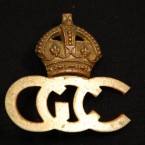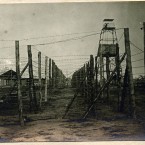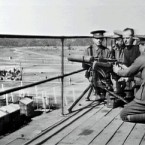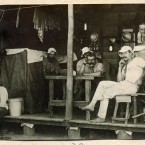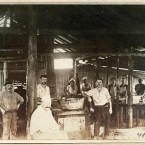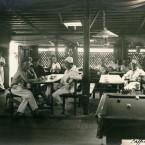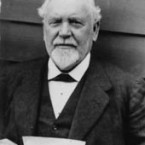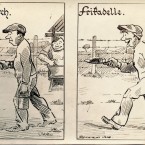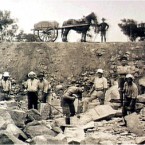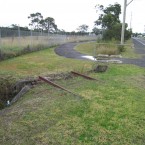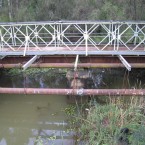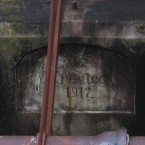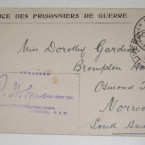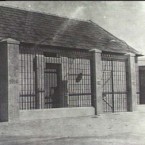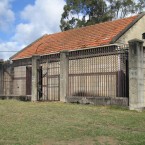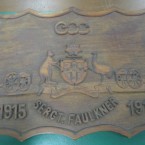Of all the camps Holsworthy was the harshest and resembled a prison in the true sense of the word. A strict regime of control was enforced by the camp authorities. Raids often turned up stills and grog making faculties. Internees were seldom allowed out of the camp confines and here boredom and melancholy took hold. In early 1915 there were riots over rations and work duties that were subdued by negotiations between the camp commandant Colonel Sands and the Camp Committee. In order to keep the camp under control Sands ran the camp firmly. Troublesome internees were singled out and thrown into solitary confinement in the camp gaol. There were regular searches for contraband and weapons. The internees were not allowed to free range like those at Berrima or Trial Bay and were kept behind barb wire fences and watched over by guards with a mounted machine gun in a substantial watchtower on the southern perimeter.
Further riots occurred in 1916 when a crime gang calling itself the Black Hand assaulted and extorted money and goods from fellow internees.
Many artefacts and objects were made at Holsworthy, but most of these have been lost or forgotten over time. Images from the various albums reflect a more institutionalised culture like that of a prison. They show defiance in the production of German national symbols and culture. They are not the artistic photography of Trial Bay or the children’s toys or canoes and water craft of Berrima. There were no friendly relationships between guards and internees like those at Berrima. In fact at Holsworthy an internee was killed during a breakout attempt.


